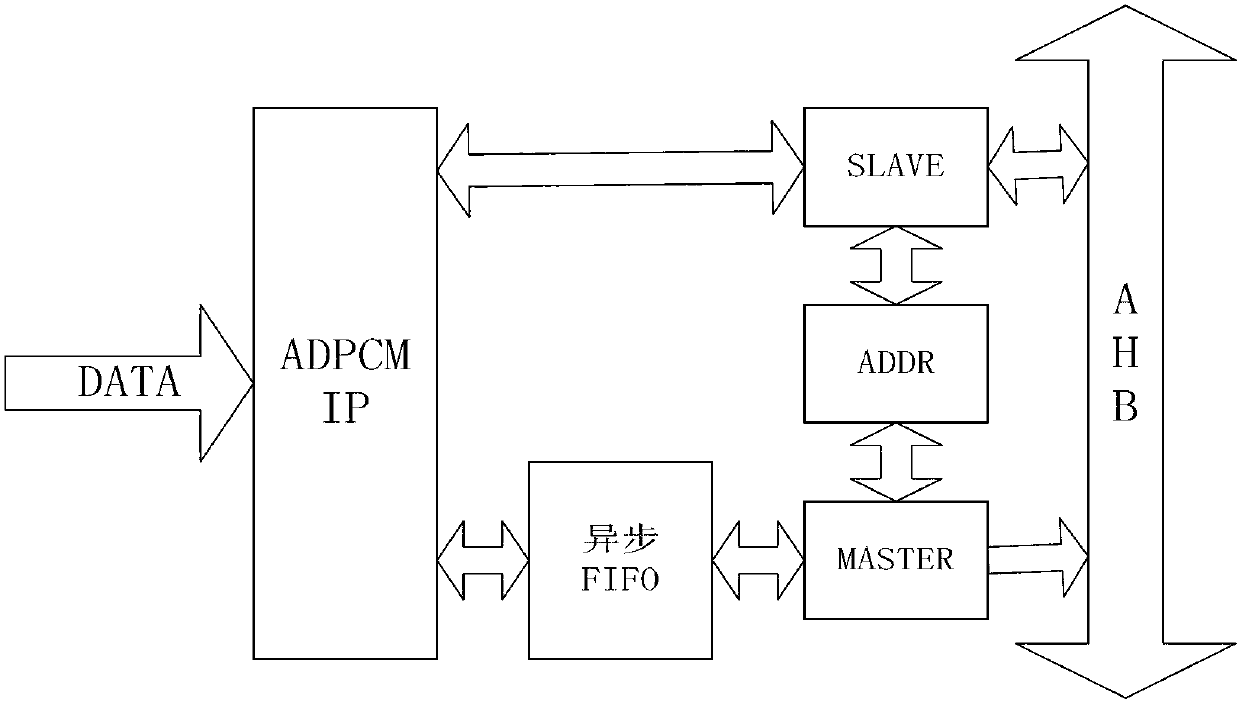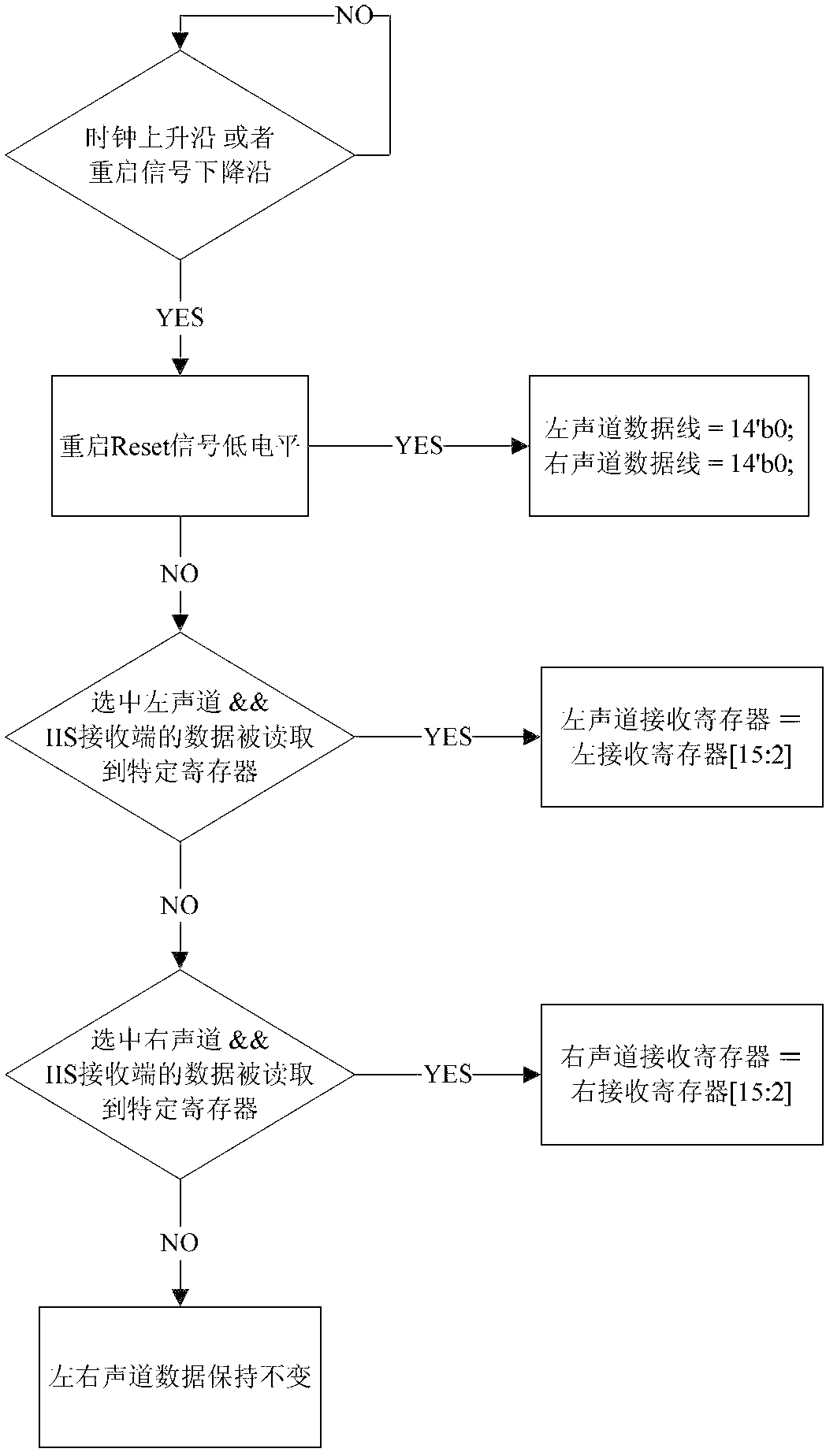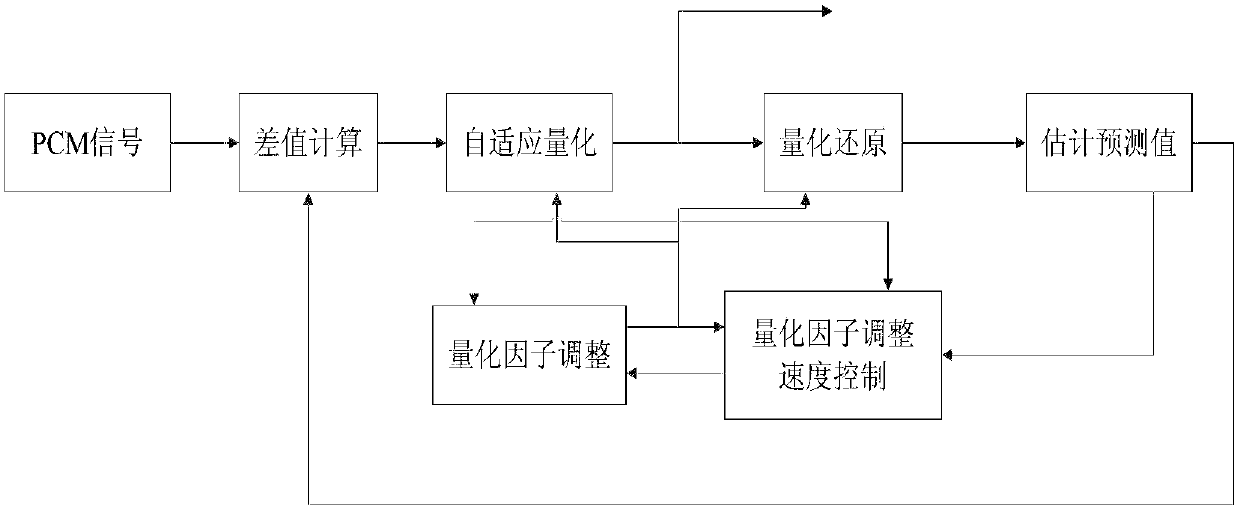Voice transmission system for wireless sensor network
A wireless sensor network and voice transmission technology, applied in voice analysis, wireless communication, advanced technology, etc., can solve the problems of complex power consumption and insufficient low power consumption, and achieve the effect of low power consumption
- Summary
- Abstract
- Description
- Claims
- Application Information
AI Technical Summary
Problems solved by technology
Method used
Image
Examples
Embodiment
[0031] This embodiment describes a voice transmission system for a wireless sensor network. The voice data is converted into a PCM value through a CODEC coding unit, and the PCM value is 24-bit data of the left and right channels. The voice transmission system includes Conversion unit, compression coding unit, serial-to-parallel conversion unit and main control unit, the structure of which is as follows figure 1 As shown, the specific transmission process is as follows:
[0032] The gained PCM value is then sent to the digit conversion unit, and the digit conversion unit converts the received 24-bit data of the left and right channels into two 14-bit left and right channel data, and its workflow is as follows figure 2 shown;
[0033] The two 14-bit left and right channel data are then compressed and encoded to achieve lossy compression of the audio data, and the 14-bit audio data is compressed into 4-bit audio data;
[0034] The 4-bit audio data is sent to the serial-to-par...
PUM
 Login to View More
Login to View More Abstract
Description
Claims
Application Information
 Login to View More
Login to View More - R&D
- Intellectual Property
- Life Sciences
- Materials
- Tech Scout
- Unparalleled Data Quality
- Higher Quality Content
- 60% Fewer Hallucinations
Browse by: Latest US Patents, China's latest patents, Technical Efficacy Thesaurus, Application Domain, Technology Topic, Popular Technical Reports.
© 2025 PatSnap. All rights reserved.Legal|Privacy policy|Modern Slavery Act Transparency Statement|Sitemap|About US| Contact US: help@patsnap.com



